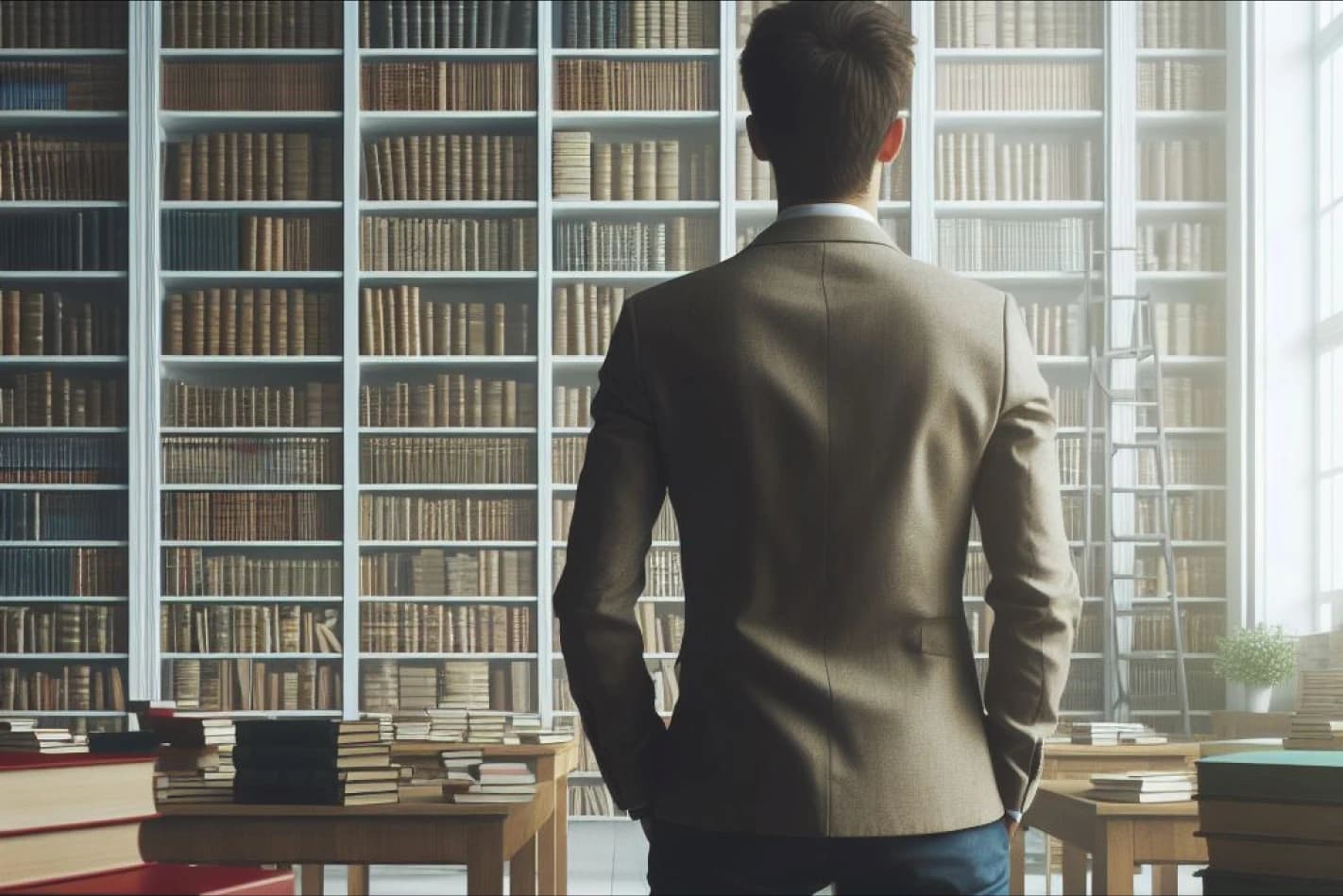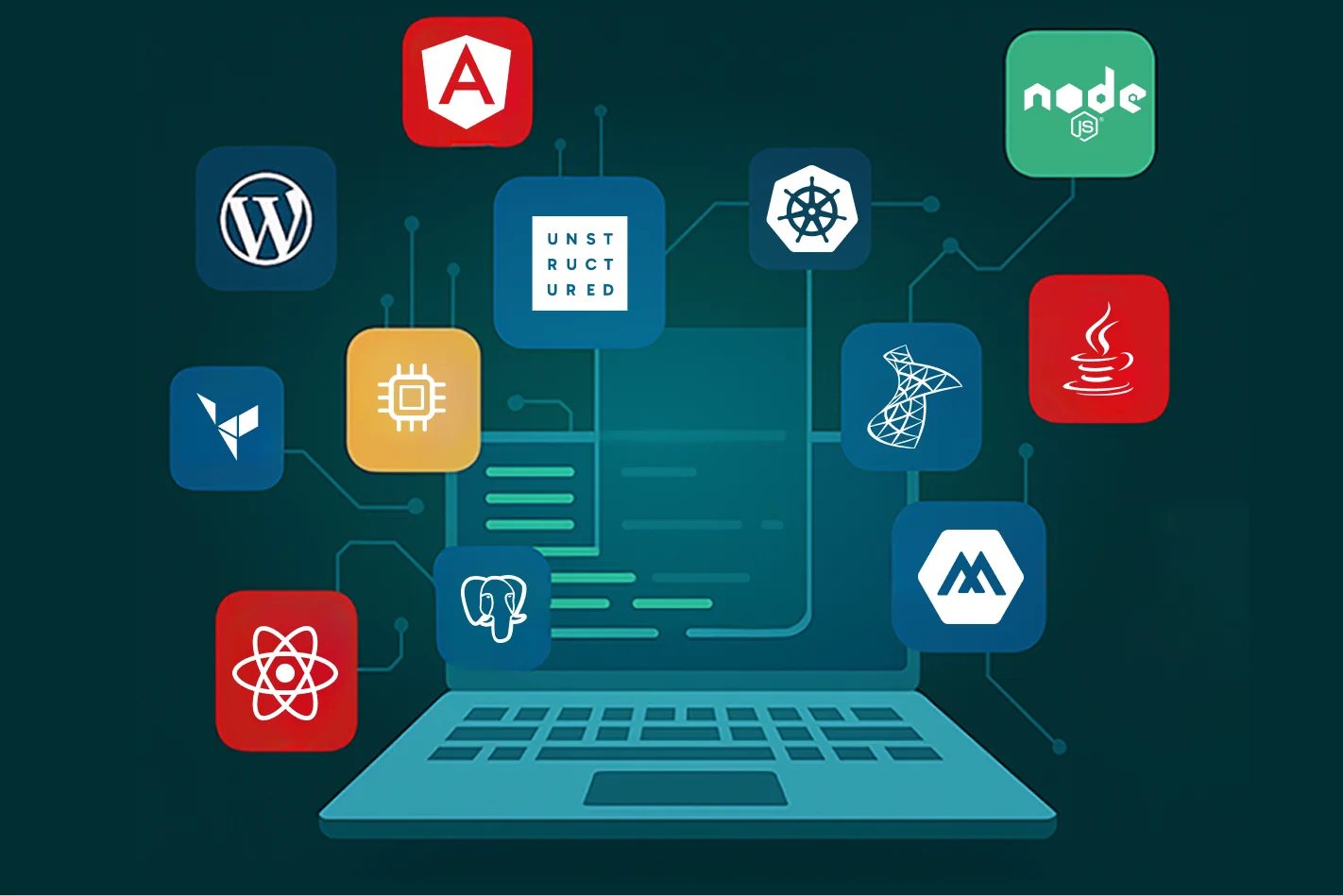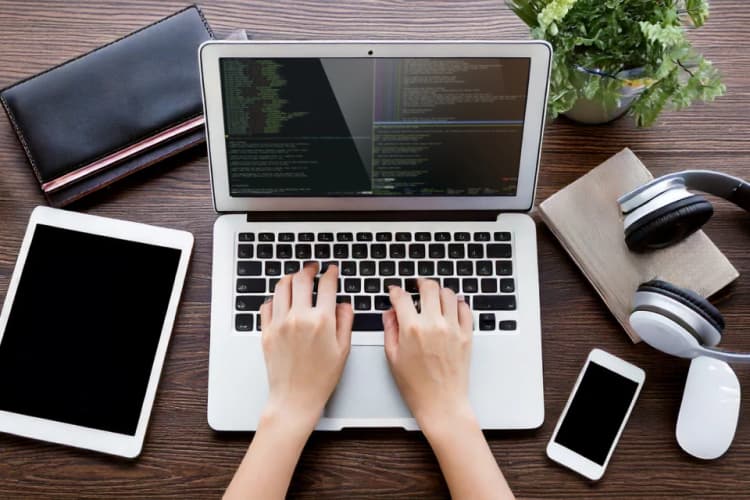How to Choose the Tech Stack for MVP Development

Selecting the perfect tech stack plays a strategic role in building any product, and an MVP is no exception. Whether you rely on your in-house resources for application engineering or commission external MVP development services, this stage must get enough time and attention. The decision you make at this point will shape the final product and influence your business.
But how do you make the right choice? Many business leaders tend to stick with technologies they are familiar with or have used before. But it’s a slippery slope. In this article, we’ll discuss what aspects you should consider instead and how the decision about the tech stack might impact your product quality, costs, time-to-market, and more.
What Is a Tech Stack for an MVP?
One of the crucial stages in creating MVPs for software products is determining the tech stack. This term describes the roster of frameworks, programming languages, libraries, and tools necessary for building such solutions.
Typically, a tech stack for MVP development consists of three major classes of programs. The frontend and backend tech stack for MVP includes tools instrumental in crafting the product's client-side (UI and UX) and server-side (functionality and logic). The database set of software development elements offers a storage place for relevant records where data management takes place.
Sometimes, infrastructure is also considered while selecting the right technology stack for MVP development since it encompasses hardware and networks where software components are located.
Understanding Tech Stack Components

If you opt for MVP development services, your tech partner will help you choose the technology stack for MVP that suits the project most. But let’s outline some basics to help you better grasp the concept. The components of a tech stack vary for each MVP. However, all tech stacks consist of several standard layers.
Frontend technologies
It handles the client side of a product, including a user interface and interactions. Technologies used here usually include JavaScript frameworks and libraries like React.js, Angular, or Vue.js and HTML/CSS for markup and styling. On top of that, a development team often uses UI/UX design tools, such as Figma or Sketch, at the prototyping stage.
Backend technologies
This layer is responsible for the product’s server-side operations and business logic. Developers can write the backend code using various programming languages, like Node.js, Python, Ruby, Java, and PHP, and frameworks, such as Express.js, Django, Ruby on Rails, and Spring Boot.
Database solutions
It deals with storing, retrieving, and manipulating the data used by the MVP. The key technologies at this layer include relational database management systems like MySQL, Microsoft SQL Server, or PostgreSQL, as well as NoSQL databases such as MongoDB, Firebase, or Redis. Some of these databases are on-premises systems (MySQL, Oracle, SQL Server) that allow for greater control over data, don't require an internet connection, and enable superfast data retrieval. Others (MongoDB or Redis) are cloud-based, which gives them an edge in cost-efficiency, flexibility, scalability, and integration potential.
Infrastructure
This layer encompasses the underlying hardware, networking, and system software that support the operation of the MVP. It can involve cloud platforms like Amazon AWS or Microsoft Azure, containerization technologies like Docker, orchestration tools such as Kubernetes, and more.
Mobile development technologies
A Mobile MVP tech stack differs from the one used by teams providing web development services. A major difference is that mobile apps are built for specific operating systems, each requiring its own set of tools, languages, and frameworks. For instance, mobile app MVP tech stacks for iOS primarily include Swift and Objective-C, while Android apps rely on Java and Kotlin. However, mobile app development services might also be for cross-platform solutions using frameworks like Flutter, React Native, or Xamarin.
DevOps tools
Today, many vendors embrace the DevOps model when developing software products. For them, choosing the right technology stack involves setting up a reliable and robust CI/CD pipeline. This is achieved by leveraging top-notch version control, automation, and deployment tools, like GitHub Actions, Jenkins, GitLab, AWS CodeDeploy, and others.
Selecting the Best Tech Stack for MVP Development: Factors Conditioning the Choice

You might be wondering, what's the problem with simply sticking to the technologies you know instead of diving into the complexities of choosing a stack? Well, since the choice of tech stack significantly affects the MVP's quality, this approach will likely result in a less-than-ideal solution. Here are the key aspects that determine the choice:
Team expertise and availability
This is a starting point in your choosing routine. Even the most cutting-edge technologies and disruptive tools won't help you obtain a good MVP if you lack the talent to handle them. Make sure the available team is up to the task, or consider hiring outsourcers to reinforce your current IT personnel.
Project requirements and scope
Project scope largely depends on the core features the MVP will contain. In turn, the feature roster is dictated by the platform on which you will build your product and the target audience the solution will cater to. A potential increase in the app's gamut of capabilities and the need for frequent updates are also important factors to consider in MVP tech stack selection.
Development speed
The more complex a tech stack is, the more time it will require to handle it. That is why, if you need the product on short notice, it makes sense to choose the tech stack for an MVP that enables high-speed SDLC. If such tools suit your purpose, at least make sure there is solid community support behind the ones you select and a straightforward documentation streamlining their usage.
Scalability
When building an MVP, you should keep future development iterations in mind. A scalable tech stack for MVP development enables it to grow and scale up, while the wrong choice could leave you with an MVP that can't evolve into a full-fledged product.
Performance
A good choice of a tech stack will ensure there are no issues with response times, load speed, and user interactions. Conversely, a poor choice could result in sluggish performance and frustrated early adopters who would turn away.
Security
A carefully chosen stack with built-in security features will safeguard your MVP from data breaches, cyberattacks, and unauthorized access. Besides, it should align with major regulations in the industry (GDPR, HIPAA, CCPA, etc.) since a vulnerable stack will expose your MVP to security threats, lowering your product’s chances for success.
Innovation
Technology is evolving rapidly. A stack you're familiar with might be outdated, limiting the MVP’s ability to incorporate new features, technologies like artificial intelligence, or market trends.
Budget constraints
Getting a big-ticket MVP runs contrary to the very idea of a minimum viable product. However, scrimping on every tool is not going to get you far quality-wise, either. You should strike a balance between cost and performance in MVP development and arrive at a healthy combination of open-source and paid technologies to implement the project.
As you see, the stakes are high, so seeking professional assistance is a prudent choice. Engaging experts through MVP development services for startups gives you access to specialized knowledge and minimizes the risk of ending up with a low-quality MVP due to the wrong tech stack.
Business Benefits of Picking an Adequate MVP Tech Stack

Some business leaders downplay the importance of choosing the right tech stack for MVP, thinking any shortcuts can be fixed in later iterations. But your tech stack is the backbone of your product. Even in the MVP stage, the choice can impact your entire business in many ways, including:
- MVP results. A low-quality MVP can skew feedback from early adopters since users may give negative reviews due to performance issues, even if they like your overall idea. Thus, you risk missing out on valuable market opportunities.
- Costs. Choosing the wrong technologies for your MVP can lead to extra development work or the need for reworks later on, resulting in higher costs.
- Time-to-market. Your tech stack impacts how quickly you can launch your product. Inappropriate technologies can slow you down, giving competitors a chance to grab a larger market share.
- Business growth. An MVP’s tech stack should facilitate seamless product evolution as your business needs and reach increase. A tech stack that limits your product scalability will limit your business growth, too.
If you team up with a trustworthy tech provider offering custom software development for small businesses and startups, they'll guide you through the business risks associated with different tech stacks. This way, you can choose technologies that perfectly match your business objectives.
Common Pitfalls to Avoid When Selecting a Tech Stack

What typical obstacles do companies face when selecting a tech stack for their MVP projects?
Substandard preliminary research
Sometimes, an MVP project miscarries not because of technical complexities but because the solution's customers may discover that it doesn't hold water business-wise. This happens when the app fails to meet the target audience's needs: its user pool is too small, there is already a similar product in the market, it relies on ineffective monetization methods, etc. To avoid such consequences, the development team should conduct a thorough preliminary analysis of the niche and meticulously map out the product’s marketing strategy.
Falling for trends
Artificial intelligence, machine learning, virtual reality, blockchain, IoT, and other disruptive know-how are all the rage in the tech-savvy world of the early third millennium. Yet the fact that they are in high demand doesn't make them suitable for any software project. That is why, instead of going for "everyone has them, so why can’t we?" you should consider their relevance for your particular MVP’s capabilities.
Filling the MVP with unnecessary technologies
Occasionally, developers forget that M in MVP stands for minimum and try to crowd it with as many features as possible. Don't make a similar mistake, but keep MVP lean. It should be simple in terms of usage and contain only the mission-critical technologies to let it showcase its viability (speaking of V in MVP!).
Ignoring long-term maintenance and support
You should realize that the technological realm is very dynamic. Some tools require regular updates, security patches, and other tweakings to keep their efficiency on a proper level. But if they lack reliable support channels or can't boast of a robust user community, you may face problems in the long run once they become outdated or are removed from service.
Integration issues
Software solutions seldom operate as standalone products. They are developed to become part of a larger IT environment, where they often work in sync with third-party systems, services, and resources. All these integrations should be envisaged at the MVP development stage to make sure the newly built product plays well with other software pieces and performs its functions smoothly.
Conclusion
The choice of a tech stack significantly impacts product quality and plays a vital role in shaping your success by influencing time-to-market, cost efficiency, MVP results, and potential business growth. That's why it's crucial to select the right technologies that best suit your project requirements from the start rather than just sticking to what you're familiar with.
If you want to obtain a first-rate MVP, it is wise to seek expert assistance through MVP development services. Experienced developers from an IT managed team for software engineering will thoroughly assess your product idea and choose the right tech stack for MVP projects to bring it to life.
Need a professional development team to build your MVP? Our qualified and certified experts will lend you a helping hand in the tech stack selection for a startup MVP or a product for a full-fledged business and perform its full-cycle implementation. Reach out, and let’s discuss your product vision in more detail.



